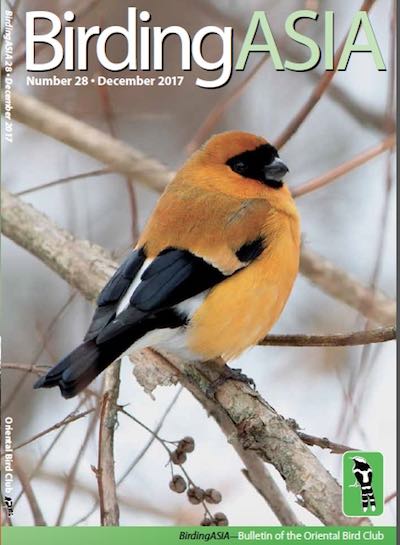Oriental Bird Images, www.orientalbirdimages.org, the online photographic image resource library of the Oriental Bird Club today celebrated with the upload of its 100,000th image.
The stunning landmark image is a portrait of a Bar-headed Goose taken by Sunil Singhal at Chambal Wildlife Sanctuary, Dholpur, Rajasthan, India on 16 March this year. Bar-headed Geese are known to migrate over the Himalayas at altitudes of more than 7,000 metres (23,000 ft).
“The uploading of the 100,000th image is testament to the years of dedicated hard work put in by a multitude of unpaid volunteers over the past 13 years since OBI was launched,” said Krys Kazmierczak, who conceived the idea for a publicly accessible online image library for Asian bird species and subspecies.
“The library speaks volumes for the sheer dedication of more than 1,500 amateur and professional bird photographers who have freely contributed their stunning images to this resource for bird researchers worldwide.”
Oriental Bird Images (OBI) includes photographic illustrations to a staggering 2,876 Asian bird species, around 99% of all those found in the region, and also includes examples of each known subspecies of the majority of species illustrated. There are just 29 “missing” species from the 2,905 species recognised by the Oriental Bird Club in the region.
Today, OBI is among the most visited bird images libraries on the internet, and has proved of immense value to the scientific community, ornithologists, conservationists and anyone with an interest in Oriental Birds.
“OBI goes way beyond just an image gallery for bird photographers to post their images—it is a vital academic resource for anyone with an interest in the birds of the Oriental region,” said Richard Grimmett, Director of Conservation at BirdLife International and author of several bird field guides to the Oriental region.
“I consult OBI on a regular basis when carrying out research on the Asia’s bird life—the site’s importance as a conservation tool is immense.”
ENDS
About Oriental Bird Club
The Oriental Bird Club, UK registered charity 297242, is for people around the world who are interested in birds of the Oriental region and their conservation. The Club was founded in 1984 and has around 2,000 members.
The Club exists: to encourage an interest in wild birds of the Oriental region and their conservation to promote the work of regional bird and nature societies to collate and publish information on Oriental birds
Through the generous support of members and corporate sponsors, the OBC conservation fund has supported more than 250 conservation projects throughout Asia, primarily run by local people. More than £200,000 has been invested in conservation in the region since 1984.
Website: www.orientalbirdclub.org Twitter: @orientbirdclub Facebook: /groups/OrientalBirdClub/

















